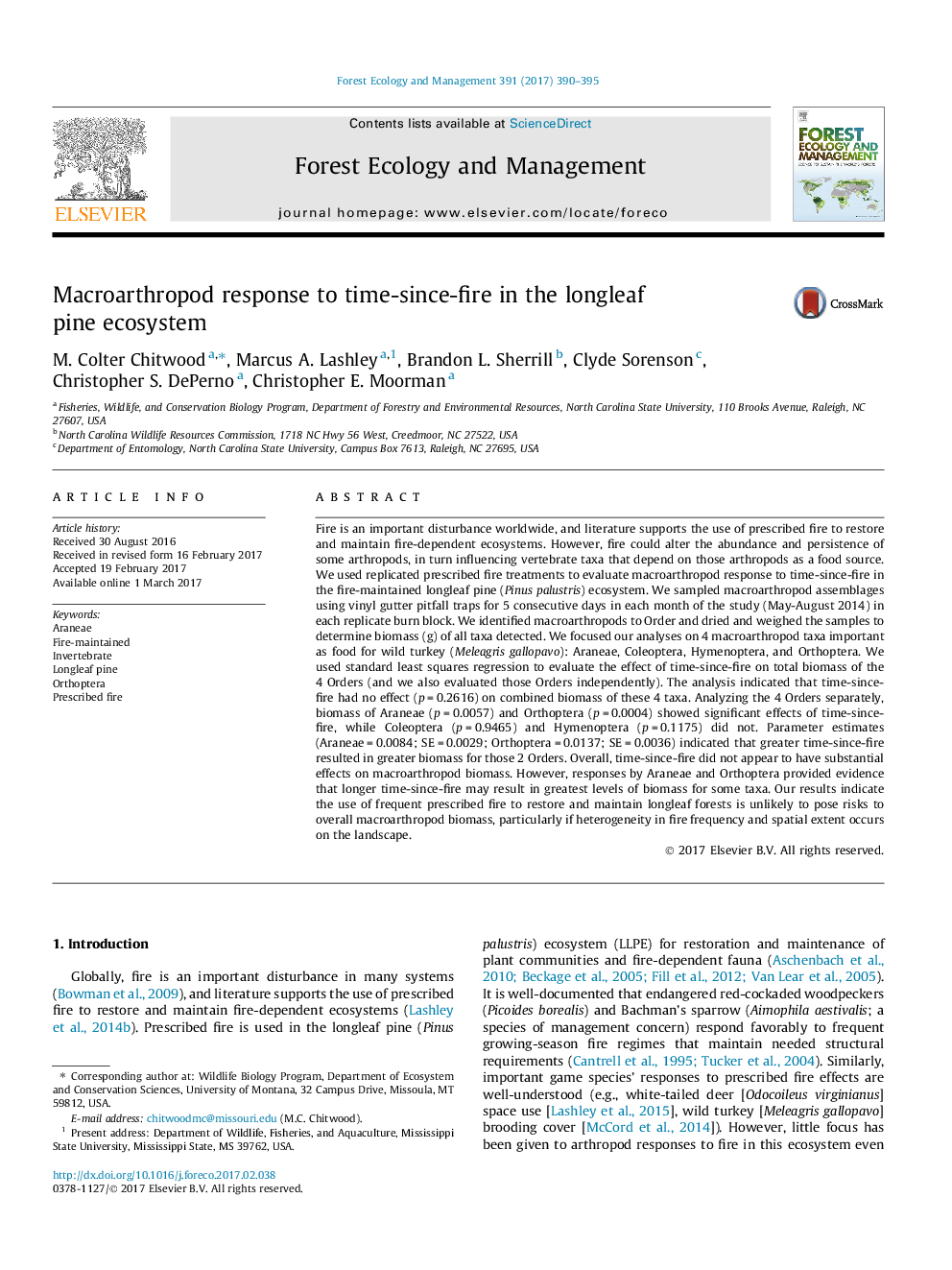| کد مقاله | کد نشریه | سال انتشار | مقاله انگلیسی | نسخه تمام متن |
|---|---|---|---|---|
| 6459472 | 1421367 | 2017 | 6 صفحه PDF | دانلود رایگان |
• Evaluated the effects of time-since-fire on biomass of macroarthropod Orders.
• Did not detect an effect of time-since-fire on all Orders combined.
• Biomass of Araneae and Orthoptera was greater as time-since-fire increased.
• Frequent fire is unlikely to pose risks to overall macroarthropod biomass.
• Frequent fire could result in declines of recovery level for some macroarthropods.
Fire is an important disturbance worldwide, and literature supports the use of prescribed fire to restore and maintain fire-dependent ecosystems. However, fire could alter the abundance and persistence of some arthropods, in turn influencing vertebrate taxa that depend on those arthropods as a food source. We used replicated prescribed fire treatments to evaluate macroarthropod response to time-since-fire in the fire-maintained longleaf pine (Pinus palustris) ecosystem. We sampled macroarthropod assemblages using vinyl gutter pitfall traps for 5 consecutive days in each month of the study (May-August 2014) in each replicate burn block. We identified macroarthropods to Order and dried and weighed the samples to determine biomass (g) of all taxa detected. We focused our analyses on 4 macroarthropod taxa important as food for wild turkey (Meleagris gallopavo): Araneae, Coleoptera, Hymenoptera, and Orthoptera. We used standard least squares regression to evaluate the effect of time-since-fire on total biomass of the 4 Orders (and we also evaluated those Orders independently). The analysis indicated that time-since-fire had no effect (p = 0.2616) on combined biomass of these 4 taxa. Analyzing the 4 Orders separately, biomass of Araneae (p = 0.0057) and Orthoptera (p = 0.0004) showed significant effects of time-since-fire, while Coleoptera (p = 0.9465) and Hymenoptera (p = 0.1175) did not. Parameter estimates (Araneae = 0.0084; SE = 0.0029; Orthoptera = 0.0137; SE = 0.0036) indicated that greater time-since-fire resulted in greater biomass for those 2 Orders. Overall, time-since-fire did not appear to have substantial effects on macroarthropod biomass. However, responses by Araneae and Orthoptera provided evidence that longer time-since-fire may result in greatest levels of biomass for some taxa. Our results indicate the use of frequent prescribed fire to restore and maintain longleaf forests is unlikely to pose risks to overall macroarthropod biomass, particularly if heterogeneity in fire frequency and spatial extent occurs on the landscape.
Journal: Forest Ecology and Management - Volume 391, 1 May 2017, Pages 390–395
